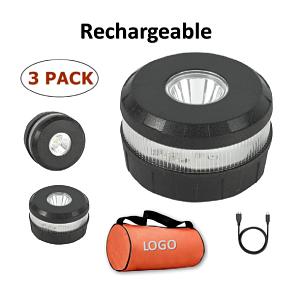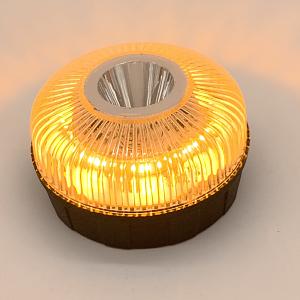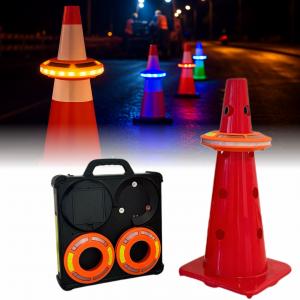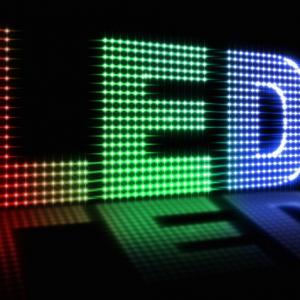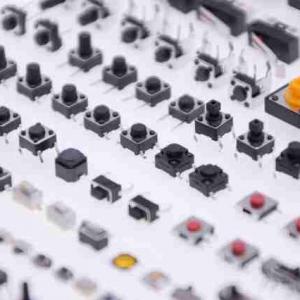Do you know lithium battery?
With the progress of society, batteries are widely used. Compared with batteries of various materials, lithium batteries have the best performance. The main component of lithium batteries is lithium. Metal Li is a common metal with very active properties. It is the metal with the smallest atomic weight, small specific weight, smallest electrochemical equivalent, and the most negative standard electrode potential among the metals in the periodic table. Using it for battery performance is better than previous lead-acid batteries, nickel-lead batteries and so on. It is mainly manifested in the main aspects of good safety performance, high power and energy density, and long service life.
Lithium batteries are rechargeable batteries that use graphite or other carbon materials as the negative electrode and lithium-containing compounds as the positive electrode. It is a kind of battery that uses lithium metal or lithium alloy as positive/negative electrode material and uses non-aqueous electrolyte solution.
1. the development of lithium batteries
l The first patent on lithium-ion batteries was published in 1981.
l In 1992, SONY began mass production of civilian lithium-ion batteries.
l In 1998, a large number of square lithium-ion batteries were put on the market, occupying a large market share.
2. Classification of lithium batteries
l Sort by shape
Cylindrical lithium battery
Cylindrical lithium-ion battery, its model name is generally 5 digits, the first two digits are the diameter of the battery, the middle two digits are the height of the battery, and the last digit 0 represents a cylindrical shape, in millimeters.
The most commonly used cylindrical lithium batteries:
18650 lithium battery
14500 lithium battery
18500 lithium battery
21700 lithium battery
26650 lithium battery
32650 (32700) lithium battery
Square lithium battery
Square lithium battery usually refers to aluminum shell or steel shell square lithium battery, which is widely used in exploration and mapping, medical equipment, and portable testing equipment.
l Sort by shell
Steel case lithium battery
Most of the early lithium-ion batteries had steel casings. Due to the heavy weight of the steel shell and poor safety, but the strong stability of the steel, many manufacturers optimized the design structure through safety valves, PTC and other devices in the later period, which greatly increased its safety performance. And some directly replace the steel shell, using aluminum shell and soft package, such as the current mobile phone battery.
Aluminum shell lithium battery
Aluminum-shell lithium-ion batteries are slightly better than steel-shell lithium-ion batteries due to their lighter weight and safety.
Flexible packaging lithium battery
Due to its light weight, low cost of mold opening and high safety, flexible packaging lithium-ion batteries are gradually expanding their market share.
l Classification by cathode material
There are currently four types of cathode materials used in lithium-ion batteries:
Lithium cobalt oxide battery
Lithium manganate battery
Lithium iron phosphate battery
Nickel cobalt manganese (ternary) lithium battery
l By Electrolyte
Liquid Lithium Ion Batteries
The liquid lithium-ion battery uses a liquid electrolyte, and the electrolyte is an organic solvent + lithium salt.
Polymer lithium-ion battery
The polymer lithium-ion battery is replaced by a solid polymer electrolyte. This polymer can be "dry" or "colloidal". At present, most of the polymer colloidal electrolytes are used. The matrix of the polymer is mainly HFP-PVDF, PEO, PAN and PMMA.
All-solid-state lithium-ion battery
"All-solid-state lithium battery" is a lithium battery in which the electrodes and electrolyte materials used in the working temperature range are solid and do not contain any liquid components, so the full name is "all-solid-state electrolyte lithium battery".
3. Lithium battery parameters
l Voltage
Standard
The potential difference between the positive and negative electrodes of the lithium battery is called the nominal voltage of the lithium battery. The nominal voltage is determined by the electrode potential of the plate material and the concentration of the internal electrolyte.
Open circuit voltage
The terminal voltage of the lithium battery in the open circuit state is called the open circuit voltage. The open circuit voltage of a lithium battery is equal to the difference between the reduction electrode potential of the positive electrode and the negative electrode potential of the lithium battery.
Operating Voltage
The working voltage refers to the voltage displayed during the discharge process after the lithium battery is connected to the load, also known as the discharge voltage. The working voltage at the beginning of the discharge of the lithium battery is called the initial voltage.
Recommended voltage for lithium batteries:
12V lithium battery
24V lithium battery
36V lithium battery
48V lithium battery
l Capacity
The amount of electricity that a lithium battery can give under certain discharge conditions is called the capacity of a lithium battery, which is represented by the symbol C. The commonly used unit is ampere-hour, abbreviated as ampere-hour (Ah) or milliampere-hour (mAh).
The capacity of a lithium battery is affected by the cathode material used, the temperature of the battery, the discharge rate, and the voltage.
l Internal resistance
The internal resistance of the lithium battery refers to the resistance when the current passes through the interior of the lithium battery, and the internal resistance will affect the voltage of the lithium battery.
l Cycle life
The cycle life of a lithium battery is generally expressed by the number of times of use, and one cycle represents a complete charge and discharge cycle of the lithium battery (that is, the lithium battery is charged from empty to full, and then discharged from full to empty).
Note: The cycle characteristics of lithium batteries are good, and generally, about 80% of the capacity can be maintained after 500 cycles.
l Discharge rate
The discharge rate refers to the magnitude of the current of the lithium battery during discharge, which is generally expressed by C, and expressed by the formula as:
Discharge rate = discharge current / rated capacity
Note: Since lithium batteries use organic solvent electrolytes, the conductivity is generally only a few percent of that of lead-acid or alkaline battery electrolytes. Therefore, when the lithium-ion battery is discharged at a large current, it is too late to replenish Li+ from the electrolyte, and a voltage drop will occur.
l Operating temperature
The working temperature of the lithium battery refers to the environment and the temperature of the battery itself that the lithium battery can adapt to when it can maintain normal charge and discharge operation.
When the lithium battery is at a low temperature, the discharge platform is reduced to a certain extent. When the temperature is high, the cycle performance of the battery will be affected, and the battery will swell slightly. Therefore, the battery is generally recommended to work in the range of 0-40 °C.
4.Lithium battery pack
Lithium battery PACK mainly refers to the processing and assembly of lithium batteries, mainly to process cells, protection boards, BMS, connecting sheets, label paper, etc. into products required by customers through the battery PACK process.
5.Lithium battery safety test
The best lithium batteries meet the UL2054 safety standard (lithium batteries) and complete the following tests:
l Electrical performance test
1. Short circuit test
2. Abnormal charging test
3. Forced overcharge test
4. Forced discharge test
5. Limited voltage test
l Mechanical test
1. Crush Test
2. Vibration Test
l Peripheral testing
1. Casting pressure release test
2. Burning test
3. Jet test
l Environmental testing
1. Heating test
2. Thermal cycle test
6. How to use lithium batteries correctly
Lithium battery storage - The most critical storage conditions for lithium batteries are temperature and humidity. It is recommended to store them in an environment with a temperature of 20 °C. Pay attention to moisture and humidity, and do not leave the lithium battery in a power-depleted state. Do not squeeze, collide, and do not store in places with strong static electricity and strong magnetic fields.
Lithium battery charging and discharging - do not overcharge, do not use inferior chargers, and do not blindly use high rate chargers. Do not discharge more than 80% of the battery capacity.
